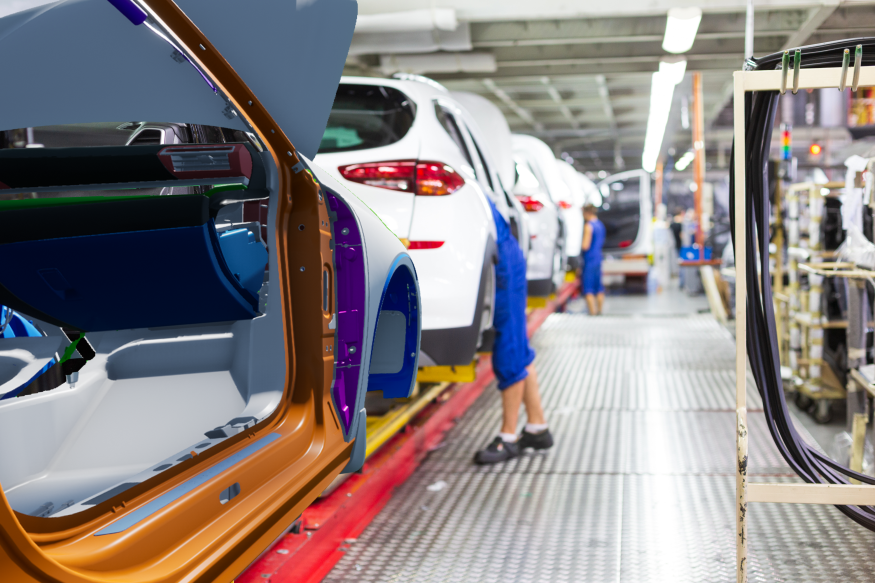Industry and virtual reality have become an inseparable duo. Since the introduction of digitalization and the robotization of production lines, immersive technologies have found their place in the sector. Even in the Industry 4.0 era, virtual reality has demonstrated its potential for boosting productivity. The paradigm shift towards Industry 5.0, which is more human-centric, has not slowed its development. Today, it is a must-have for industry professionals.
Industry 4.0 and industry 5.0: the technological revolution is underway
Industry 4.0: innovating to produce more
When it first appeared, Industry 4.0 had a single objective: to increase productivity and efficiency. The automation and digitization of processes initiated by the previous industrial revolution have been perfected to arrive at a connected (or intelligent) factory. This new factory is now equipped with sensors to collect data in real time. It’s the age of the Internet of Things (IoT).
Robotics is also making its entry into production lines, to reduce errors, save time and thus cut costs. Cyber-physical systems, i.e. computers used to control physical elements, are now used instead of humans.
We also use the Cloud, Big Data, artificial intelligence (AI) and machine learning. Everything is designed and optimized for mass production.
Industry has long believed in this model and its efficiency. The emergence and constant evolution of promising technologies has nourished this attraction to robotization. But to what limit?
The European Commission itself has initiated a new paradigm shift, calling for a “more sustainable, resilient and human European industry“. For Europe, it is important to put people back at the center of production processes for tasks that require creativity, emotion or complexity. Industry 5.0 was born.
Industry 5.0: technology serving people
Industry 5.0 represents what many call the “5th industrial revolution”. In reality, it’s an extension of Industry 4.0, with the same tools, but with a more human approach in line with contemporary challenges.
More attention is being paid to the social role of industry, environmental impact and the ethical use of technology. Industry 5.0 has sounded the death knell for mass production. Mass customization is now the order of the day. Industrial products are becoming more customized to meet individual needs.
With Industry 5.0, we believe that technology should be at the service of people, and not the other way around. Productivity is no longer the central focus. Technologies such as virtual reality and augmented reality are there to enhance interaction and collaboration between man and machine. These include voice and gesture recognition, predictive maintenance, decision support systems, collaborative robots, digital twins and, of course, virtual and augmented reality.
Skyreal allows users to demonstrate, test and make corrections directly within the solution, saving time and energy compared to current working methods.
VR and industry: the inseparable duo
The use of virtual reality (VR) and augmented reality (AR) actually emerged at the time of the 4th industrial revolution. On the other hand, their use converges more closely with the objectives of Industry 5.0.
In industry, VR is deployed to ensure employee training and safety. Operators can be trained on new machines or industrial systems in a virtual environment. This reduces the risk of workplace accidents and injuries.
Immersive technologies can also be used to test the safety of a physical site. Thanks to a VR environment or a digital twin, we can anticipate the construction or transformation of factories.
The introduction of virtual and augmented reality has enabled us to get back to a healthier, more human basis. One example is the use of virtual reality for team collaboration. It’s less about executing, and more about exchanging and modifying together, so that everyone involved (engineers, operators, customers) is in harmony.
Their work has been greatly enhanced by VR / AR, especially for the engineers. They now have access to a 3D digital world where they can create models and fully immerse themselves in them. The industry initially relied on CAD and BIM solutions, but virtual reality has more to offer. You can explore concepts ad infinitum. It’s a much more agile development practice.
Finally, since the digitization of industry, virtual reality has been an integral part of industrial production processes. But its effectiveness was most clearly demonstrated when industry reached the limits of robotization. At a time when the sector is aiming to be more sustainable and ethical, immersive technologies are the engineer’s, operator’s and even customer’s best friend.




